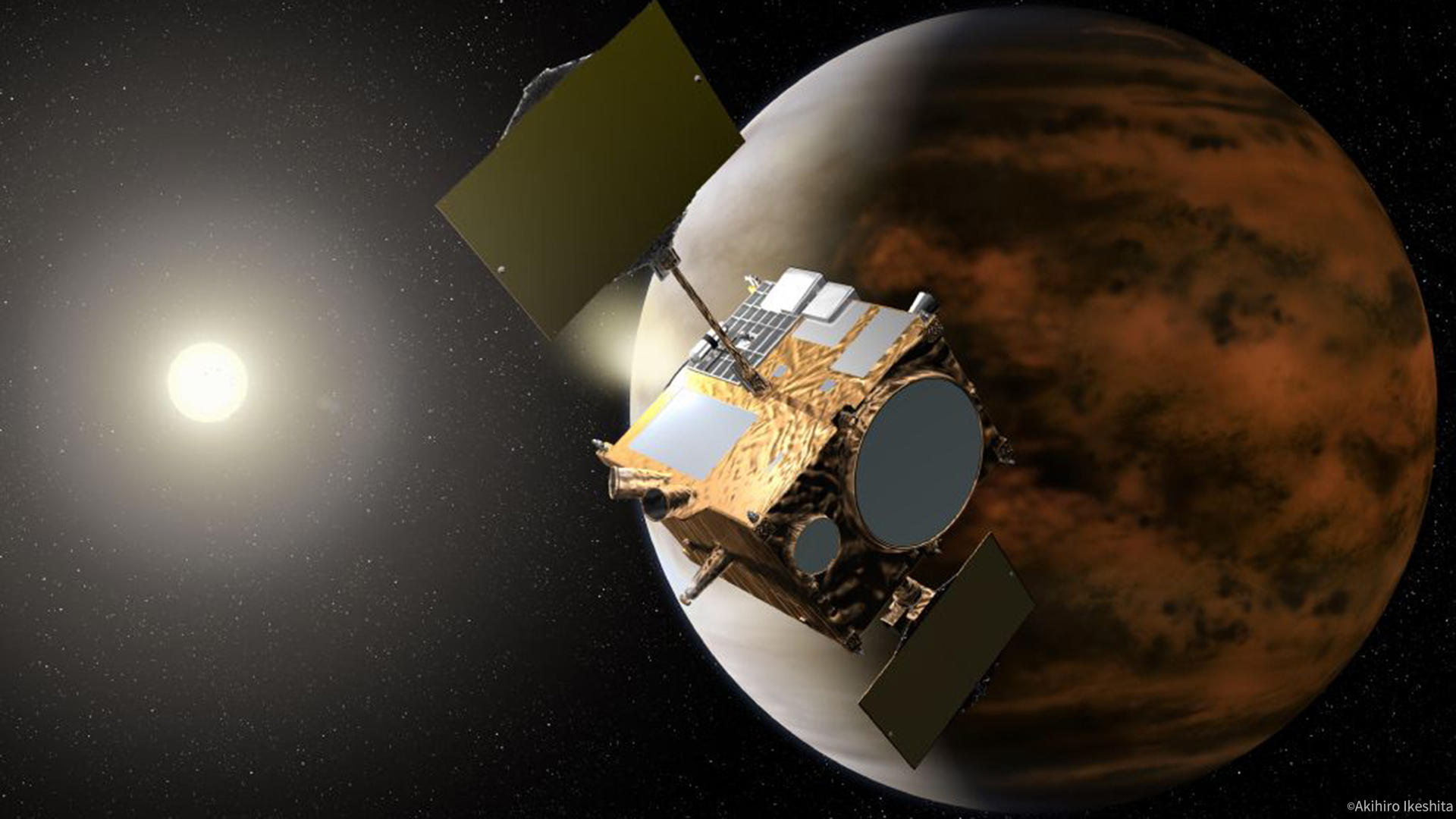
Venus

Venus
Venus Climate Orbiter "AKATSUKI"
Learning the Venusian atmosphere will also give us the insight about Earth
Venus is a planet orbiting just inside the Earth's orbit in our solar system, and is visible to the naked eye. It has nearly the same size and mass as Earth, but would not be able to support human habitation. This is because the atmosphere on Venus is mostly carbon dioxide, which is further covered by a thick cloud of concentrated sulfuric acid. The atmospheric pressure on the ground is also 90 times more than that of Earth.
Venus, possessing this formidable environment for human beings, has a huge mystery that remains to be solved. Despite the fact that the planet rotates slowly over a period of 243 days, the Venusian atmosphere circulates at a speed that is 60 times faster the planet. The main mission of Japan's first Venus Climate Orbiter "AKATSUKI" is to find out about the mechanism of this atmospheric phenomenon, which cannot be explained by conventional meteorology.
AKATSUKI, which was launched from the Tanegashima Space Center in May 2010, overcame a malfunction in its main engine and went into orbit around Venus in December 2015. Since then, AKATSUKI has revealed various interesting phenomena, e.g., an Equatorial jet-like stream of atmospheric flows in the lower to middle cloud layer of Venus. AKATSUKI also founds a bow-like thermal structure at the cloud top stretching to a length of 10,000 kilometers, which was discovered to be orographic.
AKATSUKI completed its regular two-year operation that started in April 2016, after which its operation was extended to another three-year period as there still remained fuel for controlling its attitude. AKATSUKI currently remains in the orbit around Venus and is continuing its quest for the Venusian atmosphere.
- Home>
- Global Activity>
- Public Relations>
- JAXA’s>
- JAXA's No.77>
- Venus